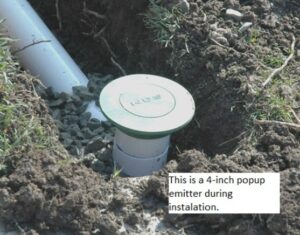Lead paint, once a common feature in homes built before 1978, poses serious health risks, especially to young children and pregnant women. With the dangers of lead poisoning well-documented, lead paint removal Salt Lake City UT has become a priority for homeowners concerned about their family’s safety. In this article, we’ll explore why lead paint removal is critical for ensuring a safe living environment and how abrasive blasting and other techniques like sandblasting services can help address this hazard effectively.
The Hidden Dangers of Lead Paint
Understanding the Risks of Lead Exposure
Lead exposure is toxic, particularly to children under six years old whose bodies are still developing. The effects of lead poisoning can be severe and include developmental delays, learning difficulties, and behavioral problems. Even small amounts of lead dust can have dangerous consequences if inhaled or ingested. That’s why lead paint removal is not just an aesthetic choice but a critical safety measure in homes with older paint.
As lead paint deteriorates due to aging, weather conditions, or regular wear and tear, it releases lead dust and chips into the environment. These can settle on surfaces and easily be ingested by young children who may unknowingly touch contaminated surfaces and put their hands in their mouths. Ensuring proper lead paint removal is vital to creating a safe living space for your family.
When Is Lead Paint a Concern?
If your home was built before 1978, it’s likely to have lead-based paint on its walls, doors, windows, and trim. The risk is heightened in homes where the paint is chipping, peeling, or otherwise deteriorating, releasing lead dust. If you notice any of these signs, it’s important to address the issue promptly with professional lead paint removal.
Lead Paint Removal Methods: Safely Eliminating the Hazard
When dealing with lead paint removal, safety is paramount. Several methods can be used to safely and effectively remove lead paint, with abrasive blasting and sandblasting services being two popular and efficient approaches.
1. Abrasive Blasting
Abrasive blasting is a process where abrasive materials are blasted onto surfaces to remove paint, including lead-based paint. This technique is highly effective, especially for larger areas with heavy layers of paint. It works by propelling particles (such as sand, glass beads, or other materials) at high speeds, essentially stripping away the lead paint without damaging the underlying surface.
Benefits of Abrasive Blasting for Lead Paint Removal:
• Efficiency: It’s a fast method that can cover large surface areas quickly.
• Effective for Thick Layers: Works well for surfaces with multiple layers of paint.
• Minimal Impact on Structure: When done properly, it can remove the paint without damaging the underlying materials.
However, abrasive blasting must be done by professionals who are trained in safe lead removal techniques, as it can create hazardous dust if not contained properly.
2. Sandblasting Service
Sandblasting services are similar to abrasive blasting, but specifically involve the use of sand or other granular materials to remove paint. Like abrasive blasting, sandblasting is an effective way to strip away layers of lead paint, especially in larger or more intricate areas. However, it requires a professional touch, as the process can release dust and particles into the air, creating potential health hazards if not done correctly.
Benefits of Sandblasting for Lead Paint Removal:
• Deep Cleaning: Sandblasting is effective at removing deeply embedded paint.
• Precision: It can be used for detailed areas and hard-to-reach spots.
• Fast Results: Similar to abrasive blasting, sandblasting is a quick and effective method for lead paint removal.
However, just like abrasive blasting, proper containment and safety measures must be in place to avoid contamination. It’s crucial to hire a certified professional to perform sandblasting services to ensure the area is properly sealed off and cleaned afterward.
3. Other Lead Paint Removal Techniques
While abrasive blasting and sandblasting services are popular methods, there are other ways to remove lead paint, including:
• Chemical Strippers: Non-toxic chemicals can be applied to remove lead paint layers.
• Heat Guns: A heat gun can be used to loosen the paint, which can then be scraped off.
• Wet Sanding: This involves sanding the paint while keeping the surface moist to prevent the spread of lead dust.
How to Ensure a Safe Lead Removal Process
When considering lead paint removal, it’s essential to take the proper precautions to avoid exposure to hazardous lead dust. A few key steps in ensuring a safe process include:
• Containment: The work area should be sealed off with plastic sheeting to prevent lead dust from contaminating other parts of the home.
• Protective Gear: Workers should wear protective clothing, including respirators, to avoid inhaling lead dust.
• Post-Removal Cleanup: After the paint is removed, thorough cleaning of the area is essential to remove any remaining lead particles.
It’s also crucial to hire professionals who are experienced in lead paint removal and certified in handling hazardous materials. They will know how to handle the job safely and effectively.
Why Hiring Professionals Is the Best Option
While it might be tempting to tackle lead paint removal as a DIY project, the risks associated with handling lead-based paint make it a job best left to professionals. Certified contractors have the tools, experience, and safety measures in place to ensure that the process is done correctly, without putting your family at risk.
Here’s why hiring professionals is the best choice:
• Expertise: Lead paint removal requires specialized knowledge and equipment. Professionals understand the risks and know how to handle hazardous materials safely.
• Compliance with Regulations: Lead removal is highly regulated to ensure safety. Professionals follow local, state, and federal guidelines to ensure the job is done right.
• Proper Disposal: Lead-based paint must be disposed of according to strict regulations to prevent environmental contamination. Professionals handle the disposal properly.
Protecting Your Family’s Health: The Importance of Lead Paint Removal
The primary reason for lead paint removal is to protect the health and safety of your family. Lead poisoning can have long-lasting and detrimental effects, especially on young children, whose developing bodies are more vulnerable to toxins. It can also lead to developmental delays, cognitive issues, and behavioral problems. In severe cases, it can even cause death.
Removing lead paint not only helps to eliminate these health risks but also ensures a healthier, safer living environment for everyone in your home.
Conclusion
Whether you’re renovating an older home or simply ensuring your living space is free of hazardous materials, lead paint removal is a critical step in protecting your family. While there are various methods, including abrasive blasting and sandblasting service Salt lake city UT, the most important thing is to ensure the job is done safely and professionally.
If you suspect your home has lead-based paint, don’t wait to address the issue. The health of your family is too important. Consider consulting with a professional to get an assessment and safely remove any lead paint from your home. By taking the proper precautions, you can create a safer, healthier living environment that protects your family’s well-being for years to come.





More Stories
Louis Vuitton Wall Art: The Ultimate Statement in Luxury Interior Decor
How to Choose the Right Wedding Photographer in Denver Without Stress
What to Know Before Hiring a Gutter Company in Gainesville FL: A Friendly Guide